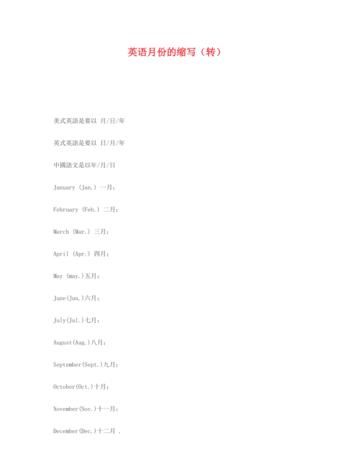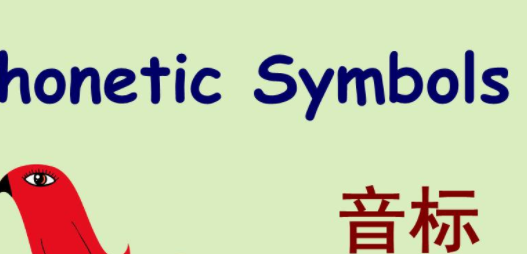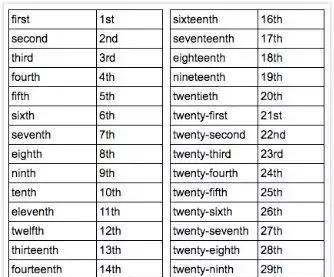本文目录
日期30号英语怎么读
写法如下:
1号-10号:first、second、third、fourth、fifth、sixth、seventh、eighth、ninth、tenth;
11号-15号:eleventh、twelfth、thirteenth、fourteenth、fifteenth;
16号-20号:sixteenth、seventeenth、eighteenth、nineteenth、twentieth;
21号-25号:twenty-first、twenty-second、twenty-third、twenty-fourth、twenty-fifth。
26号-30号:twenty-sixth、twenty-seventh、twenty-eighth、twenty-ninth、thirtieth。
例如
8月13日:the thirteenth of August;
12月26日:the twenty-sixth of December;
3月7日:the seventh of March。

扩展资料
日期的写法可以采用基数词和序数词两种形式。例如: March 1也可以写成March 1st;May 29也可以写成May 29th。
但是,日期的读法只能用序数词的形式。例如:October 31(October 31st),读作October(the)thirty-first。
日期的介词使用
1、年代前用in。如:in 1999。
2、表示月份的单词首字母要大写,表示在某月用in。如:in March。
英语中月份和星期名称都是专有名词,它们的首字母必须大写,并且前面无需用冠词。
在某月,用介词in,注意月份前不加冠词。具体日期前面要用on。如:四月一日,onApril1st.
3、日期前必须加the,日期用序数词表示;表示在某日用介词on。
如:on September the first (在九月一日) / on September 1st。
参考资料来源:百度百科--基数词
字典的英语单词是什么
如下所示,括号中是缩写:1日: first (1st)2日: second (2nd)3日: third (3rd)4日: fourth (4th)5日: fifth (5th)6日: sixth (6th)7日: seventh (7th)8日: eighth (8th)9日: ninth (9th)10日: tenth (10th)11日: eleventh (11th)12日: twelfth (12th)13日: thirteenth (13th)14日: fourteenth (14th)15日: fifteenth (15th)16日: sixteenth (16th)17日: seventeenth (17th)18日: eighteenth (18th)19日: nineteenth (19th)20日: twentieth (20th)21日: twenty-first (21st)22日: twenty-second (22nd)23日: twenty-third (23rd)24日: twenty-fourth (24th)25日: twenty-fifth (25th)26日 twenty-sixth (26th)27日: twenty-seventh (27th)28日: twenty-eighth (28th)29日: twenty-ninth (29th)30日: thirtieth (30th)31日: thirty-first (31st)。

一月一日用英语怎么说
直译这句话是 from 1st to 31st
分日英语:
日 全称 缩写
1日 first 1st
2日 second 2nd
3日 third 3rd
4日 fourth 4th
5日 fifth 5th
6日 sixth 6th
7日 seventh 7th
8日 eighth 8th
9日 ninth 9th
10日 tenth 10th
11日 eleventh 11th
12日 twelfth 12th
13日 thirteenth 13th
14日 fourteenth 14th
15日 fifteenth 15th
16日 sixteenth 16th
17日 seventeenth 17th
18日 eighteenth 18th
19日 nineteenth 19th
20日 twentieth 20th
21日 twenty-first 21st
22日 twenty-second 22nd
23日 twenty-third 23rd
24日 twenty-fourth 24th
25日 twenty-fifth 25th
26日 twenty-sixth 26th
27日 twenty-seventh 27th
28日 twenty-eighth 28th
29日 twenty-ninth 29th
30日 thirtieth 30th
31日 thirty-first 31st

句法功能
基数词在句中可作主语、宾语、定语、表语、同位语。
基数词主要表示事物或人物的个数。
The two happily opened the box. 两个人高兴地打开了盒子。(作主语)
I need three altogether. 我总共需要三个。(作宾语)
Four students are playing volleyball outside. 四个学生在外面打排球。(作定语)
We are sixteen. 我们是16个人。(作表语)
3日英文缩写怎么写
1日 first 1st
2日 second 2nd
3日 third 3rd
4日 fourth 4th
5日 fifth 5th
6日 sixth 6th
7日 seventh 7th
8日 eighth 8th
9日 ninth 9th
10日 tenth 10th
11日 eleventh 11th
12日 twelfth 12th
13日 thirteenth 13th
14日 fourteenth 14th
15日 fifteenth 15th
16日 sixteenth 16th
17日 seventeenth 17th
18日 eighteenth 18th
19日 nineteenth 19th
20日 twentieth 20th
21日 twenty-first 21st
22日 twenty-second 22nd
23日 twenty-third 23rd
24日 twenty-fourth 24th
25日 twenty-fifth 25th
26日 twenty-sixth 26th
27日 twenty-seventh 27th
28日 twenty-eighth 28th
29日 twenty-ninth 29th
30日 thirtieth 30th
31日 thirty-first 31st

扩展资料
不论英国英语或美国英语,书写时,月份还常用缩略式(May除外)
January ~ Jan. / Jan (一月)
February ~ Feb. / Feb (二月)
March ~ Mar. / Mar (三月)
April ~ Apr. / Apr (四月)
May (五月)
June ~ Jun. / Jun (六月)
July ~ Jul. / Jul (七月)
August ~ /`Aug. / Aug (八月)
September ~ Sept. / Sep. / Sep (九月)
October ~ Oct. / Oct (十月)
November ~ Nov. / Nov (十一月)
December ~ Dec. / Dec (十二月)
英语日期的表示法:
英语中月份和星期名称都是专有名词(独一无二的东西比如 月亮 太阳),它们的首字母必须大写,并且前面无需用冠词。
用英语表示日期,其顺序为“月日年”,日和年之间需用逗号隔开。如:August 2nd, 2003(2003 年 8 月 2 日)也可以用“日月年”来表示。如:10th May,2003(2003 年 5 月 10 日)。
以上就是关于日到30日的英语缩写 ,日期30号英语怎么读的全部内容,以及1日到30日的英语缩写 的相关内容,希望能够帮到您。
